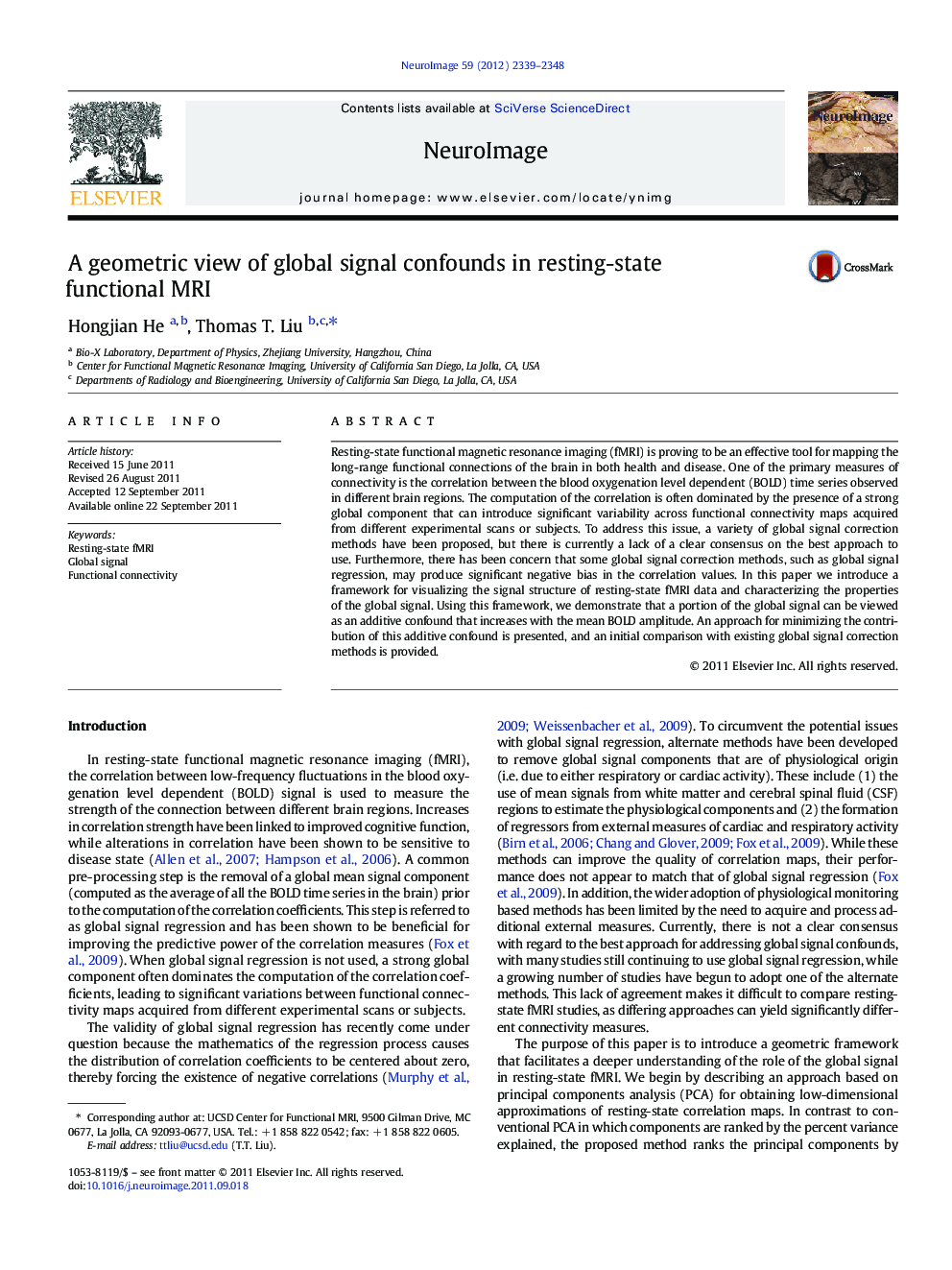| Article ID | Journal | Published Year | Pages | File Type |
|---|---|---|---|---|
| 6033502 | NeuroImage | 2012 | 10 Pages |
Resting-state functional magnetic resonance imaging (fMRI) is proving to be an effective tool for mapping the long-range functional connections of the brain in both health and disease. One of the primary measures of connectivity is the correlation between the blood oxygenation level dependent (BOLD) time series observed in different brain regions. The computation of the correlation is often dominated by the presence of a strong global component that can introduce significant variability across functional connectivity maps acquired from different experimental scans or subjects. To address this issue, a variety of global signal correction methods have been proposed, but there is currently a lack of a clear consensus on the best approach to use. Furthermore, there has been concern that some global signal correction methods, such as global signal regression, may produce significant negative bias in the correlation values. In this paper we introduce a framework for visualizing the signal structure of resting-state fMRI data and characterizing the properties of the global signal. Using this framework, we demonstrate that a portion of the global signal can be viewed as an additive confound that increases with the mean BOLD amplitude. An approach for minimizing the contribution of this additive confound is presented, and an initial comparison with existing global signal correction methods is provided.
⺠Geometric view of effect of additive global signal confounds. ⺠Method for reducing effect of additive confounds. ⺠Comparison with other global signal correction approaches.
